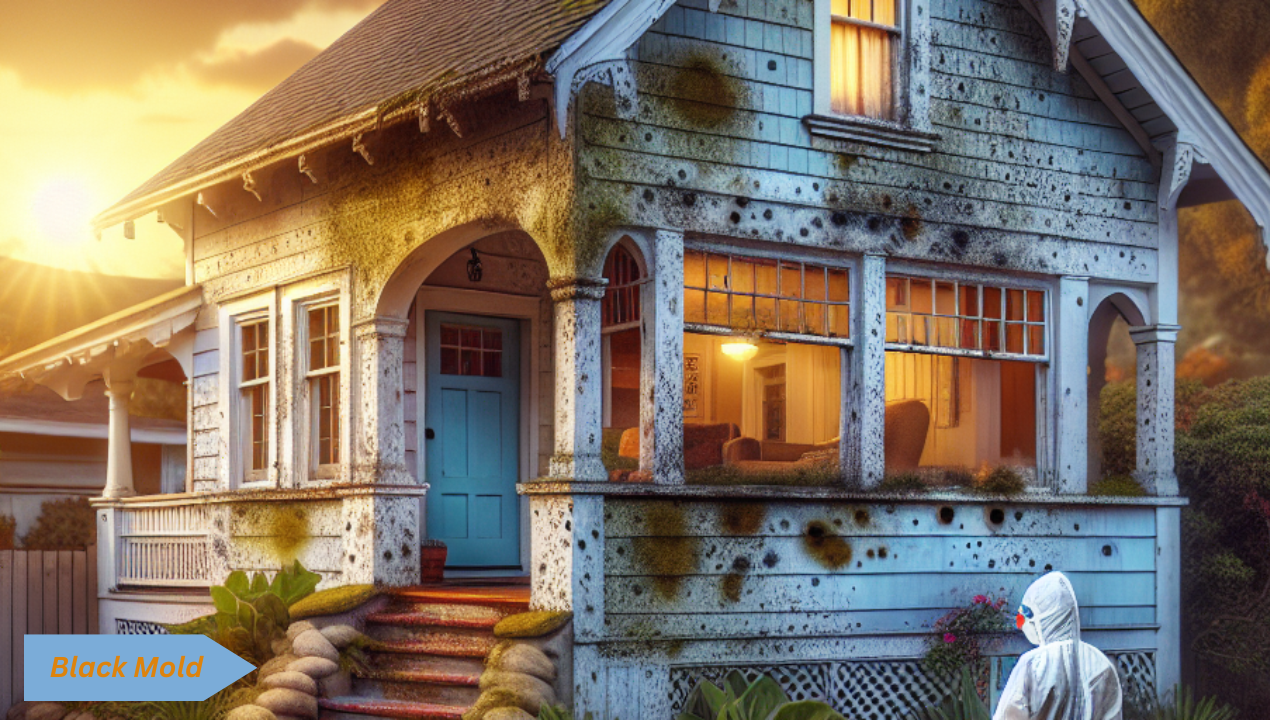Mold on painted walls is more than just an eyesore. It’s a problem that can impact your health and the integrity of your home. If you’re dealing with mold, it’s crucial to address it promptly and effectively.
This guide will walk you through everything you need to know about removing mold from painted walls and preventing it from coming back.
Common Types of Mold Found on Walls
The most common types of mold you might find on walls are black mold (Stachybotrys), white mold (Aspergillus), and green mold (Cladosporium). Each type poses its own set of risks and requires specific removal methods.
Health Risks Associated with Mold
Mold can cause respiratory issues, allergic reactions, and other health problems, especially in individuals with weakened immune systems. It’s essential to remove mold promptly to protect your health.
Causes of Mold on Painted Walls
Humidity and Moisture
Mold loves moisture. High humidity levels in your home can create the perfect environment for mold to thrive. This is especially common in bathrooms and kitchens.
Poor Ventilation
Lack of proper ventilation can trap moisture in your home, leading to mold growth. Ensuring good air circulation is key to preventing mold.
Water Leaks and Damage
Leaks from pipes, roofs, or windows can create wet spots where mold can grow. Addressing these leaks promptly can help prevent mold.
Cold Surfaces
Cold walls can cause condensation, which provides moisture for mold. Insulating your home can reduce this risk.
Signs of Mold on Painted Walls
Visible Growth
Mold often appears as black, green, or white spots on walls. If you see these, you likely have a mold problem.
Musty Odor
A persistent musty smell is a telltale sign of mold. Even if you can’t see it, the odor indicates its presence.
Peeling or Bubbling Paint
Mold can cause paint to peel or bubble. If you notice this happening, check for mold behind the paint.
Preparation for Mold Removal
Safety Precautions
Before starting, make sure to wear protective gear such as gloves, a mask, and goggles to avoid inhaling mold spores or coming into direct contact with mold.
Necessary Tools and Materials
You’ll need cleaning solutions (either natural or chemical), scrubbing brushes, sponges, a spray bottle, and rags. Also, have plastic sheeting and painter’s tape to protect nearby areas.
Protecting the Area
Cover the floor and nearby furniture with plastic sheeting. Seal off the area with painter’s tape to prevent mold spores from spreading.
Ammonia can kill mold, but never mix it with bleach as it produces toxic fumes. Use a clear ammonia solution, apply it to the mold, and leave it for a few hours before rinsing.
Step-by-Step Mold Removal Process
Assessing the Extent of Mold Growth
Examine the affected area to determine how extensive the mold growth is. If it’s more than 10 square feet, you might need professional help.
Applying the Chosen Cleaning Solution
Whether you’re using a natural or chemical solution, apply it generously to the moldy area. Ensure it covers all visible mold and surrounding areas.
Scrubbing and Cleaning the Area
Use a scrub brush to remove the mold. Be thorough to ensure all mold is scrubbed off.
Rinsing and Drying
After scrubbing, rinse the area with clean water and dry it completely. Mold thrives in moisture, so ensure the area is thoroughly dried.
Preventing Mold Regrowth
Controlling Humidity
Use dehumidifiers in damp areas of your home to keep humidity levels below 60%. This will make it harder for mold to grow.
Improving Ventilation
Ensure good ventilation in your home by using exhaust fans in bathrooms and kitchens. Opening windows regularly can also help.
Regularly Checking for Leaks
Inspect your home for leaks and fix them promptly. This includes checking under sinks, around windows, and in the attic.
Using Mold-Resistant Paint
When repainting walls, use mold-resistant paint. These paints contain antimicrobial properties that help prevent mold growth.
Conclusion
Removing mold from painted walls is essential for maintaining a healthy living environment. By following the steps outlined above and taking preventive measures, you can effectively remove mold and keep it from coming back. Remember, a mold-free home is a healthier home.
